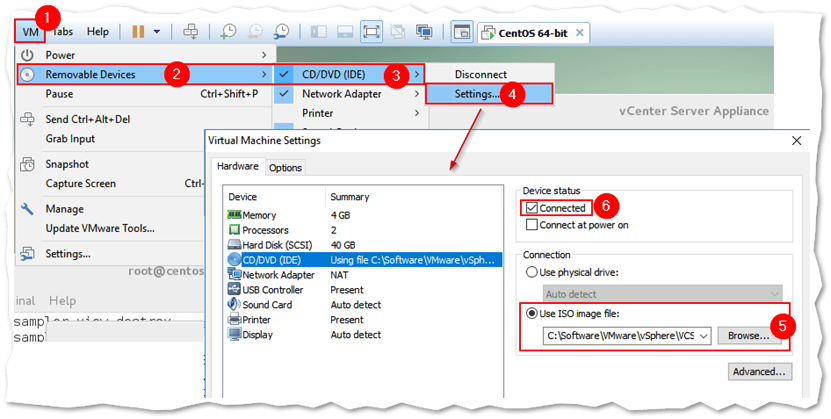
- VCENTER DOWNLOAD FOR LINUX INSTALL
- VCENTER DOWNLOAD FOR LINUX DRIVERS
- VCENTER DOWNLOAD FOR LINUX PLUS
- VCENTER DOWNLOAD FOR LINUX WINDOWS
This system is not compatible with OpenNebula contextualization as this customization overwrites the networking changes made by context scripts. There are a couple of things to take into account: You can get more information about this system in VMware documentation.
VCENTER DOWNLOAD FOR LINUX DRIVERS
OpenNebula vCenter drivers offers a way to tie one OpenNebula template with one of these customizations so it is applied on VM startup. For example configuring its network, licenses, Active Directory server, etc. VCenter offers a way to prepare the guest OS on boot. You can read about them in the Virtual Machine Definition File reference section vCenter Customization ¶ There are more options that can be set in the contextualization section. This option gets a base64 encoded string that will be decoded before writing the temporary script file. To add more complex scripts you can also use the option START_SCRIPT_BASE64. This can be done in the Settings section of the web interface or using the command line interface:ĬONTEXT = The first thing the users should do its to add their SSH public key (or keys) to its OpenNebula user configuration. For linux base images we recommend to use SSH public key authentication and using it with OpenNebula is very convenient. One of the other very important things you have to configure is user credentials to connect to the newly created Virtual Machine.

The parameters used from the Virtual Network template are explained in the Managing Virtual Networks section.
VCENTER DOWNLOAD FOR LINUX PLUS
When OpenNebula finds this option it adds the IP information for each of the network interfaces configured plus extra information that resides in the Virtual Network template, like DNS, gateway and network mask. This is done with option NETWORK = "YES". To do this configuration it injects the network information in the contextualization section. OpenNebula does not rely on a DHCP server to configure networking in the Virtual Machines. To fill this information you have to specify TOKEN = "YES" in theĬontextualization section. OneGate endpoint: the address where the OneGate daemon is reachable Token: it’s the key specific to each VM used to authenticate with the To do so the client installed with the contextualization packages ( onegate) needs some information: When the Virtual Machine belongs to a Service. The main daemon, useful to set monitoring information that can be gathered OpenNebula has a centralized service to share data between Virtual Machines and
VCENTER DOWNLOAD FOR LINUX INSTALL
On Virtual Machine boot execute the command yum install -y ntpdate Set OneGate token and onegate information in the contextĪdd network configuration to the Virtual MachineĮnable login into the Virtual Machine using ssh with the value of the user’s parameter SSH_PUBLIC_KEY

In the example we are telling OpenNebula to: START_SCRIPT = "yum install -y ntpdate" ] Here is an example of the context section using the CLI: These parameters can be both added using the CLI to the template or using Sunstone Template wizard. The most common attributes are network configuration, user credentials and startup scripts. The Virtual Machine Template has a section called context where you can automate different configuration aspects. The last two steps can be done using Sunstone or the CLI as explained in the Import vCenter Resources section Set Up the Virtual Machine Template ¶ Import in OpenNebula, the datastores where the template’s virtual hard disks are located. Make sure that you take out any installation media used in the previous steps.Ĭonvert the VM into a Template following this procedure Power off the machine so it is in a consistent state the next time it boots. These are the steps needed to finish the preparation and import it to OpenNebula:
VCENTER DOWNLOAD FOR LINUX WINDOWS
Run Sysprep in Windows Machines ¶Įxecute sysprep to prepare the OS for duplication. In vCenter open the VM menu, go to “Guest OS” section, click in “Install VMware Tools…” and follow the instructions.


Open-vm-tools are installed as a dependency of contextualization package. Install VMware Tools ¶ CentOS, Debian/Ubuntu ¶ Pkg install -y curl bash sudo base64 ruby open-vm-tools-nox11 pkg install -y one-context- *.txz Windows ¶ĭouble-click on the downloaded MSI package icon in the same way you open other documents to install it.


 0 kommentar(er)
0 kommentar(er)
